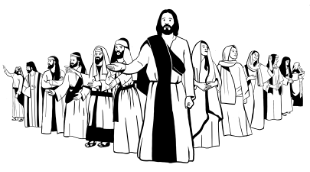by Tom Steffen, D.Miss.
The setting was central Luzon in the Philippines. The audience was composed of a group of multi-aged Ifugao, most, if not all, could read at some level. The topic for the Bible study was contrasting the attributes of God and Satan of which I presented propositionally. My language-cultural abilities were sufficient to be able to discuss the topic in the Keley-i dialect.
There was, however, a problem. You know those looks one gets when teaching and things are not going well—the questioning faces, frowns, squinting eyes, voiced objections, let’s get-out-of-here body language. That Bible study ended in disaster. What went wrong? Why couldn’t they get it? After all, everyone learns like we do, right? Wrong!
These questions, among others, began a lifelong journey researching how people learn. My first major adjustment was to use Bible comic books and tell the stories. Body language immediately changed. Participants, old to young, retold the stories to family and friends. I was shocked. How did I miss this? Aren’t stories for kids?
This transformation eventually led me into a highly neglected area, one not just for adults but youth too, one not just for those presiding in rural areas, but urban centers[1] as well. What had I mistakenly overlooked? The universal role of orality.
The use of storytelling, a significant feature of orality, raised an interesting question, what is a Bible study? Isn’t that where a group meets to analyze a certain text of Scripture, define key terms, break the text into the smallest unit as possible, draw out the author’s intended meaning, try to live it?
Second Timothy 2:15 seemed to confirm this. If leaders are to “study” (KJV) to show themselves approved, does not the same apply to those participating in Bible studies? Other translations, however, offer a different slant in relation to “study”. For example, “do everything you can to” (VOICE ), “do your best to” (NIV). Another question arose, have we taken a Western educational concept— “study”—and interjected it into what we call Bible study?
Is there a better title that captures how Christ followers can learn Scripture? One that moves beyond “study”? Beyond definitions? Beyond fragmentation? Beyond abstract propositions? Beyond abstract, cognitive content? Beyond content-centered questions? This article will explore the role of orality in relation to Bible study and offer a more concrete, relational title to replace the present cognitive-oriented “Bible study”.
The Role of Orality
M. T. Clanchy correctly concluded, “The most difficult initial problem in the history of literacy is appreciating what preceded it.”[2] And what might Clanchy be referring to?
James Dunn drills deeper. “We naturally, habitually, and instinctively work within a literary paradigm. We are therefore in no fit state to appreciate how a nonliterary cultural, an oral culture functions.”[3] Saturated in print media throughout our formal educational grooming, most of us are blind to the implications of what preceded print—orality. We therefore tend to be ignorant of what it is and what is does, not only in Scripture, but also in daily life from cradle to grave.
There’s a reason why Romans and Ephesians remain favorites among Westerns. We love the propositional medium of the epistles which comprise around ten percent of Scripture. We also tend to overlook the embedded nature of stories and characters who echo crucial insights that unpack and thematically unify Romans. These must be recognized if one is to make sense of Romans. Can one understand Romans without knowing about Adam? Abraham and Sarah? Isaac? Jacob and Esau? Rebecca? Moses? Elijah? David? Isaiah? Prophets? Baal? Israelites? Gentiles? Absolutely not!
We tend to forget that over half of Scripture is narrative and thirty to thirty-five percent is poetry (another feature of orality).[4] It would therefore seem our comprehension of Scripture meaning would be minimized if Bible teachers and learners fail to grapple with or grasp orality.
We also tend to forget that the spoken word of God existed long before the written word of God materialized. And not only was the spoken word equally authoritative as the written, the spoken also influenced how the text was written. Because of the strong oral cultures of antiquity, the Bible was written primarily for the ear, not the eye![5] With only five to twelve percent of the population literate, God wanted his highest creation to hear his word.
While those from the West tend to look at Scripture from a personal, private perspective, the influence of orality on Scripture calls for a much different emphasis. Rather than perceiving Scripture as personal and private, orality calls for communal face-to-face interaction.
The Holy Spirit didn’t just give us the written word of God, he gave us the spoken-written word of God. We have much to learn.
What is Orality?
What is orality? Succinctly stated, “orality is holistic communication embodied in relationships that create social identities.”[6]
As holistic communication,
- it is multi-sensory (appealing, impactful, rational),
- it integrates imagination, emotions, reason, body, soul, spirit, the material and spiritual worlds,
- it recognizes the power of spoken words (Simon the sorcerer),
- it includes external voices as well as inner voices, both of which when heard are perceived as performative events rather than informational exchanges,
- it goes beyond the ear gate to include the eye gate (e.g., symbols, images),
- it prefers to put meat on the bones, not pick off pieces (fragmentation),
- it prefers repetitive embodied demonstration over cognitive definitions,
- it requires a different form of logic—narrative logic—that is more circular, more spiral, more ambiguous (bounded fluidity),[7]
- it requires immediate actionized thought,
- it is a patterned way people receive, reflect, remember, rehearse, relay information,
- it is universal yet expressed locally (there are oralities as there are literacies)
As relational,
- like TESOL Ministry’s logo, it centers on relationships,
- it is communal (public eye), face-to-face,
- it prefers dialogue and debate,
- it concentrates on conflict, confusion, changes,
- there is a strong focus on honor and shame,
- learning takes place best through apprenticeship-mentorship,
- rather than print, the messenger validates the message,
- it extends beyond the human world to include the material and spiritual worlds,
- it locates it roots in the Trinity.

As a social identity,
- everyone from cradle to the grave is an oralist to some extent,
- those with artistic rhetoric are respected,
- people not only read text discerningly but characters and contexts too,
- life is perceived as a continuum that includes levels of orality and levels of literacy,
- orality and literacy levels from high to low create social levels from celebrated to criticized.
A more summative definition of orality follows,
“By choice or circumstance, multiple variants of orality include a natural, universal, living (socially embodied), holistic (appealing, impactful, multisensory, rational) modes of relating and communicating—receiving, reflecting, remembering, rehearsing, relaying—that wed ear (sound) and eye (sight), often in an indirect circular spiral or casual fashion, all of which create social identities and ideologies individually and collectively.”[8]
Improving the Phrase and Practice of “Bible Study”
Because I came at Scripture from a Western “Bible study” mindset, I assumed much as to how the Bible should be communicated to the Ifugao. The Ifugao, much higher on the orality continuum, shamelessly reminded their teacher, much higher on the literary continuum, that communication had hit a stone wall.
The Ifugao challenged my revision of 1 Cor. 13:11,
“When I was a child oralist, I spoke, thought, reasoned, remembered in an oral-aural way as we all do. But when I matured to a literate, print mindset, I left behind my childish oral ways of communication and identity.”
Rather than focusing on cognitive propositions when contrasting the attributes of God and Satan,
- what if I would have remained a strong oralist?
- what if I would have used narrative logic rather than propositional logic?
- what if I would have focused on Bible characters and events to address each proposition?
- what if I would have relied on the concrete demonstration of characters rather than abstract definitions?
- what if I would have cast God’s and Satan’s role in a story format rather than cold lists of propositions?
- what if I would have asked character-centric questions rather than content-centric questions?[9]
- what if I would have . . .
Looking back, I wish I would have been thinking about concrete oral-based character theology rather than abstract propositional-based systematic theology. What is character theology? Simply stated, character theology is engaging God through “reading” biblical characters in the context of story.”[10]
Focusing on the colorful cast of Bible characters (e.g., humans [individuals or groups], spirits, animals, insects) rather than concepts and characteristics is far from boring. Bible characters ignite the imagination, pull in the emotions, stimulate debate, call for choices, show the consequences of living with the choices, all without jettisoning the rational.
Character theology (CT) adds fullness, depth, atmosphere, nourishment, humanness in contrast to other types of theologies not designed to interpret narratives. CT goes beyond ideas, concepts, perceptions, propositions, intangibleness to tangible, homey, life realities. CT walks among, not above, not below or not beyond God’s highest creation. CT resonates because it’s representable and recognizable. CT connects.
I now prefer to place personalities before propositions. It’s not an either/or. Thanks to the Ifugao, who I had gone to teach the Bible, the taught taught the teacher; they gave me a new Bible.
Bible characters, from the commendable to the cautionary, are earthy, memorable, easy to tell their stories to others. That is because Bible characters R Us—desperate, anxious, fearful, happy, insightful, healthy, weak! Bible characters connect!
For the above reasons I have soured on using the analytical focused “Bible study”. I much prefer Engaging Bible Characters (EBCs). Bible characters provide a great way to teach abstract concepts. More importantly, God chose to reveal himself most precisely through his sovereignly chosen cast of colorful characters. EBCs offer a more concrete, relational title to replace the present cognitive-oriented “Bible study”.

Some Take Aways
- Focus on people, not programs.
- God’s Word began as spoken words, not written manuscripts.
- More than half of Scripture is narrative.
- God chose to reveal his character most precisely through his sovereignly chosen colorful cast of characters.
- Bible characters provide a great way to teach abstract biblical principles and propositions concretely.
- Bible characters make abstract concepts understandable, reproducible, memorable.
- Story may have multiple meanings.
- Character theology opens Bible interpretation up to all as we all “read” people and places.
- Replacing “Bible study” with a more concrete, relational “Engaging Bible Characters” (EBCs) may give you and those you teach a new Bible.
Check Out
Interested in Orality? Try God Speaks: Conversations on Orality & the Gospel Podcast
[1] See Barger and Lovejoy, Unreadable: Another Book You Probably Won’t Read, 2024.
[2] Clanchy, Memory to Written Record, 41.
[3] Dunn, Oral Gospel Tradition, 57 (emphasis original).
[4] See Steffen and Bjoraker, The Return of Oral Hermeneutics, 95-97.
[5] See Steffen and Bjoraker, The Return of Oral Hermeneutics, 63-102.
[6] Steffen and Neu, Character Theology, 125 (emphasis original).
[7] See Steffen and Bjoraker, The Return of Oral Hermeneutics, 118-121.
[8] Steffen and Neu, Character Theology, 125 (emphasis original).
[9] See https://bit.ly/3Kk8XB0 hashtag#bible hashtag#God
[10] Steffen and Neu, Character Theology, 31 (emphasis original).



